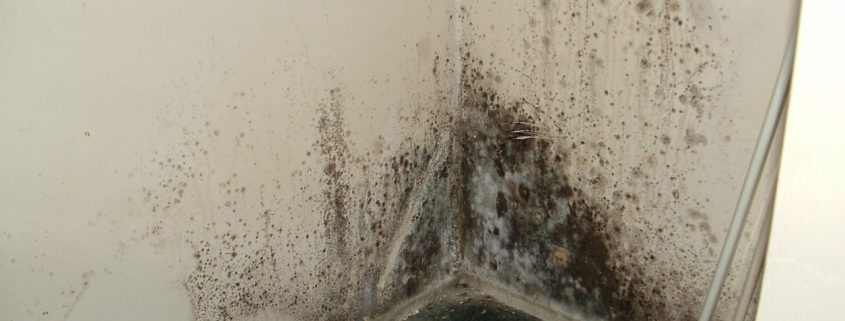Mould in Nutshell
Mould is a type of fungus that require moisture and a suitable food source to grow inside and outside the home. It usually appears as green, grey, brown, black, white or red growth or stains on walls, ceilings and other surfaces.
Moulds reproduce by releasing vast numbers of tiny spores into the air which can be inhaled.
This producing adverse health effects such as:
- Neurological affects
- Respiratory difficulties
- Vision and eye irritation
- Skin allergies
- Weakness of the immune system
- Reproductive system issue
- Tiredness and fatigue
Mould growth can often be seen as surface discolouration on ceilings, walls and furniture. Commonly there may also be a musty smell. Whenever there is any evidence of moisture ingress or water damage, there is likely to be mould growth.
Visible mould in houses is typically the result of high levels of indoor moisture and insufficient ventilation and/or heating. The best solutions are passive ventilation through opening windows, installing a rangehood over the stove in the kitchen and an exhaust fan in the bathroom and laundry. Exhaust vents should be vented to the outside, preferably through your soffit lining. Avoid using unflued gas heaters, which produce a lot of moisture.
Stachybotrys Chartarum
One of the most common moulds found during inspections.
Some types of mould produce toxic compounds. Stachybotrys chartarum is a toxic mould that has been associated with leaking buildings in New Zealand in recent years. The mould is generally caused by leaks that originate outside the building and from leaks in wet areas such as bathrooms within buildings.
Formal identification of harmful moulds such as Stachybotrys Chartarum can only be carried out at laboratories.
Stachybotrys generally appears as a greenish-black mould that grows on building materials with a high cellulose content such as Plasterboard, Fibre-cement, wall and roof underlays, wall paper and timber that has become and remained wet for some time.
While Stachybotrys is growing, it produces a wet slime which covers the spores, preventing them from releasing and becoming airborne. When Stachybotrys is identified, it is imperative to ensure the mould is removed correctly to prevent spores from becoming airborne and exposing the building occupants.
Testing for Stachybotrys Chartarum
If any black mould is found, it is recommended that it be tested to determine if it is Stachybotrys chartarum. Carefully take a sample by the following process:
- Wear a respirator with a P1 filter (minimum protection) and disposable gloves. Ensure that no skin is exposed.
- With a strip of clear adhesive tape about 100 mm long, place the tape over the mould and press firmly.
- Remove the tape and place onto non-stick baking paper. Fold the paper around the tape and place in a plastic bag.
- Securely seal the bag.
- Send the sample to an accredited testing facility such as Hills Laboratories for analysis
Removing and cleaning up toxic moulds
When toxic mould is found, it usually affects a significant area of the building and employing a specialist contractor to carry out the removal is recommended.
For small areas, the mould may be removed provided the workers undertaking the removal follow these procedures:
- Seal off the space from other parts of the building by taping up all openings.
- Wear a respirator with a P1 filter (minimum protection).
- Wear protective clothing that is disposable or easily washable.
- Remove any materials from which the mould cannot be removed such as wallpaper, timber products, ceiling tiles, gypsum board, carpet, drapes and furniture (carpet that is contaminated may be difficult to clean completely).
- Place removed materials in plastic bags that can be sealed.
- For materials such as glass, plastic and metal from which the mould can be removed completely, clean the affected area using hot water and chlorine bleach, then rinse and allow to dry completely.
- Use a stiff brush on rough or uneven surfaces.
- On completion, thoroughly vacuum all surfaces of the sealed area using a vacuum with a fine particulate (HEPA) filter. Once this is done, the room seals can be removed.
In all cases where possible we recommend seeking advice or engaging the services of an experienced and suitably qualified decontamination specialist.




